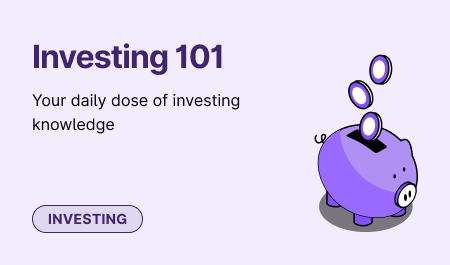Midcap funds have emerged as an attractive investment option for individuals looking to diversify their portfolios and achieve potentially higher returns compared to large-cap funds. Midcap funds invest in medium-sized companies with a proven track record and strong growth potential. However, selecting the right midcap fund can be challenging, given the vast number of choices available in the market.
Selecting the right midcap fund requires thorough research and understanding of your investment objectives and risk tolerance. By considering factors such as historical performance, fund manager track record, portfolio composition, risk-adjusted performance metrics, expense ratio and turnover ratio, you can make a well-informed decision about which midcap fund best suits your needs. It's essential to periodically review your investment choices to ensure they align with your financial goals and market conditions. Additionally, seeking professional advice from a financial advisor can further enhance your investment strategy and help you navigate the complexities of midcap fund selection.
Let’s discuss the best strategy to select a midcap fund, including essential factors to consider and tips for making an informed decision.
What is a Midcap Fund?
A midcap fund is a form of a mutual or exchange-traded fund that mainly invests in the stocks of medium-sized firms, with a market capitalisation between $2 billion to $10 billion. These companies are considered more established than small-cap companies but have not yet reached the size and stability of large-cap companies. Midcap funds offer investors an opportunity to participate in the growth potential of these firms while still enjoying some level of stability compared to small-cap investments.
Midcap companies typically exhibit a balance between the high growth potential of smaller companies and the stability of large, well-established organisations. They often have a proven track record and a strong market presence in their respective industries. Investing in midcap funds allows investors to benefit from the potential upside of these companies while mitigating some of the risks associated with smaller, less established businesses.
The performance of midcap funds tends to be less correlated with the overall market than large-cap funds, making them an attractive option for investors looking to diversify their portfolios. While midcap funds generally carry a higher risk level than large-cap funds, they can deliver higher returns, making them suitable with a moderate risk tolerance and a long-term investment horizon.
Key Aspects to Evaluate When Choosing the Ideal Mid-cap Fund
- Define Your Investment Goals and Risk Tolerance
Before you start evaluating midcap funds, it is crucial to have a clear understanding of your investment objectives and risk tolerance. Midcap funds typically have higher growth potential but may also be more volatile than large-cap funds. Ensure that your investment horizon is long enough (ideally 5-7 years or more) to weather potential market fluctuations and aligns with your financial goals.
- Research the Fund's Performance
Examine the fund's historical performance over different market cycles to gauge its consistency and ability to deliver returns. While past performance does not guarantee future results, it can provide valuable insights into the fund's potential. Compare the fund's returns with its benchmark and peers to understand how it fares in a competitive landscape.
- Analyze the Fund Manager's Track Record
A competent fund manager can significantly impact a fund's performance. Research the fund manager's experience, investment philosophy and track record managing similar funds. Look for fund managers with a consistent approach and a history of outperforming their benchmarks and peers.
- Assess the Fund's Portfolio Composition
Review the fund's portfolio holdings to ensure the investment approach aligns with your objectives and risk tolerance. To mitigate risk, a well-diversified midcap fund should invest in a mix of sectors, industries and companies. Pay close attention to the fund's top holdings, which can significantly impact its performance.
- Evaluate the Fund's Risk-Adjusted Performance Metrics
Risk-adjusted performance metrics, such as the Sharpe ratio and Sortino ratio, can help you understand how a fund has performed relative to the risks it has taken. A higher Sharpe or Sortino ratio indicates better risk-adjusted performance, suggesting that the fund generates higher returns for each unit of risk. Comparing these metrics across different midcap funds can help you identify those that have managed risks effectively while delivering solid returns.
- Consider the Fund's Expense Ratio
Fees and expenses can significantly impact your returns over time. When selecting a midcap fund, consider the fund's expense ratio, which represents the annual fees charged as a percentage of assets under management. Lower expense ratios can translate into higher returns for investors over the long term. Compare the expense ratios of different midcap funds to ensure you are not overpaying for fund management.
- Monitor the Fund's Turnover Ratio
A fund's turnover ratio reflects the frequency with which its portfolio is changed or rebalanced. A high turnover ratio may indicate frequent trading, leading to increased transaction costs and potential tax liabilities. Generally, a lower turnover ratio is preferable, as it suggests a more stable investment strategy and potentially lower expenses.
- Seek Professional Advice
If you are uncertain about your ability to select the right midcap fund or need assistance with your overall investment strategy, consider consulting a financial advisor. A qualified professional can provide personalised advice based on your financial goals, risk tolerance and investment horizon.
Conclusion
These guidelines and staying committed to your long-term investment strategy can help you reap the rewards of investing in midcap funds. These medium-sized companies often present a unique combination of stability and growth potential, making them an attractive choice for investors seeking to diversify their portfolios and achieve potentially higher returns.
Remember that patience and a long-term investment horizon are crucial when investing in midcap funds. Market fluctuations are inevitable, but with the right strategy and a disciplined approach, you can successfully navigate the unpredictable landscape and make well-informed investment decisions that contribute to your financial success.



